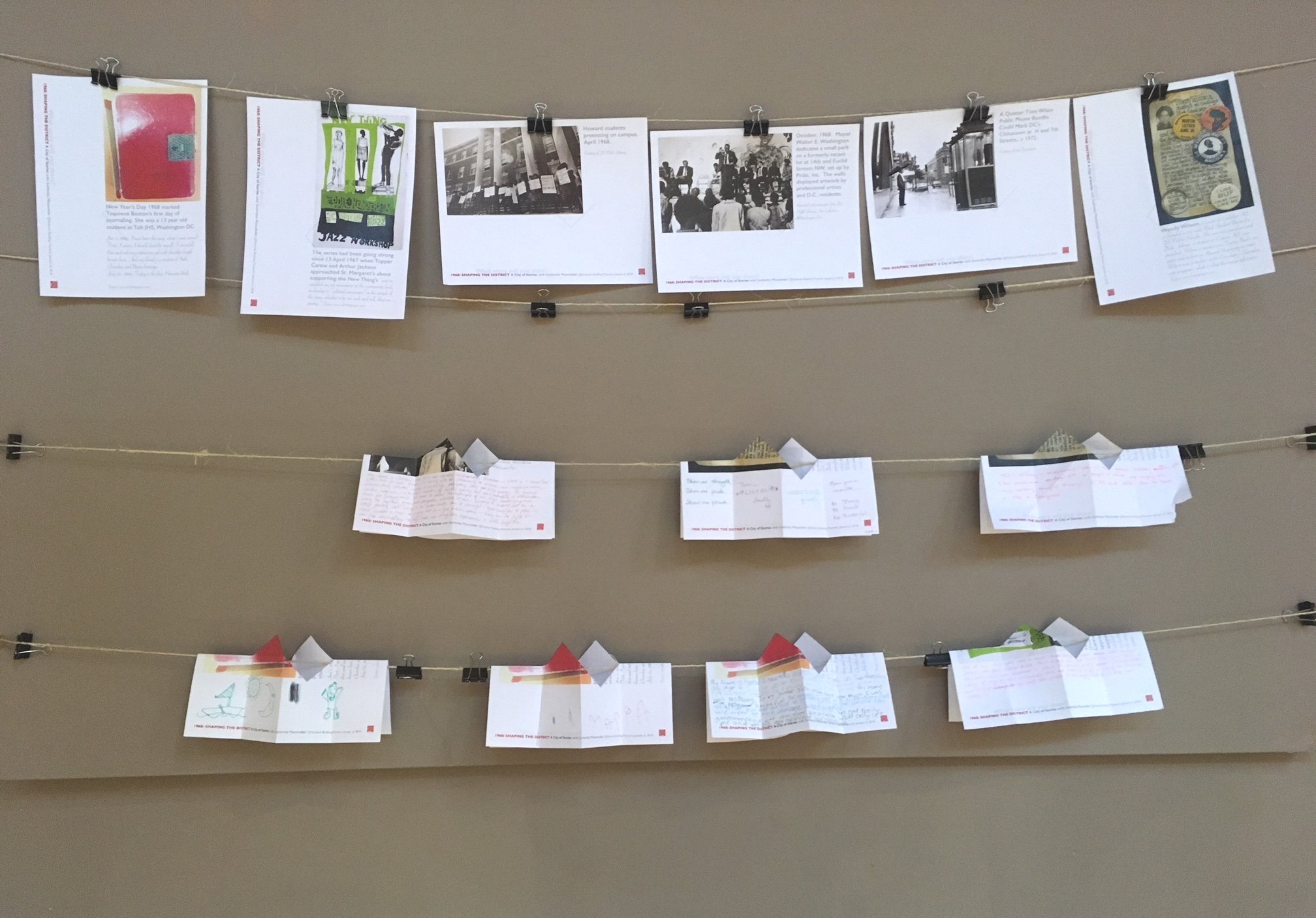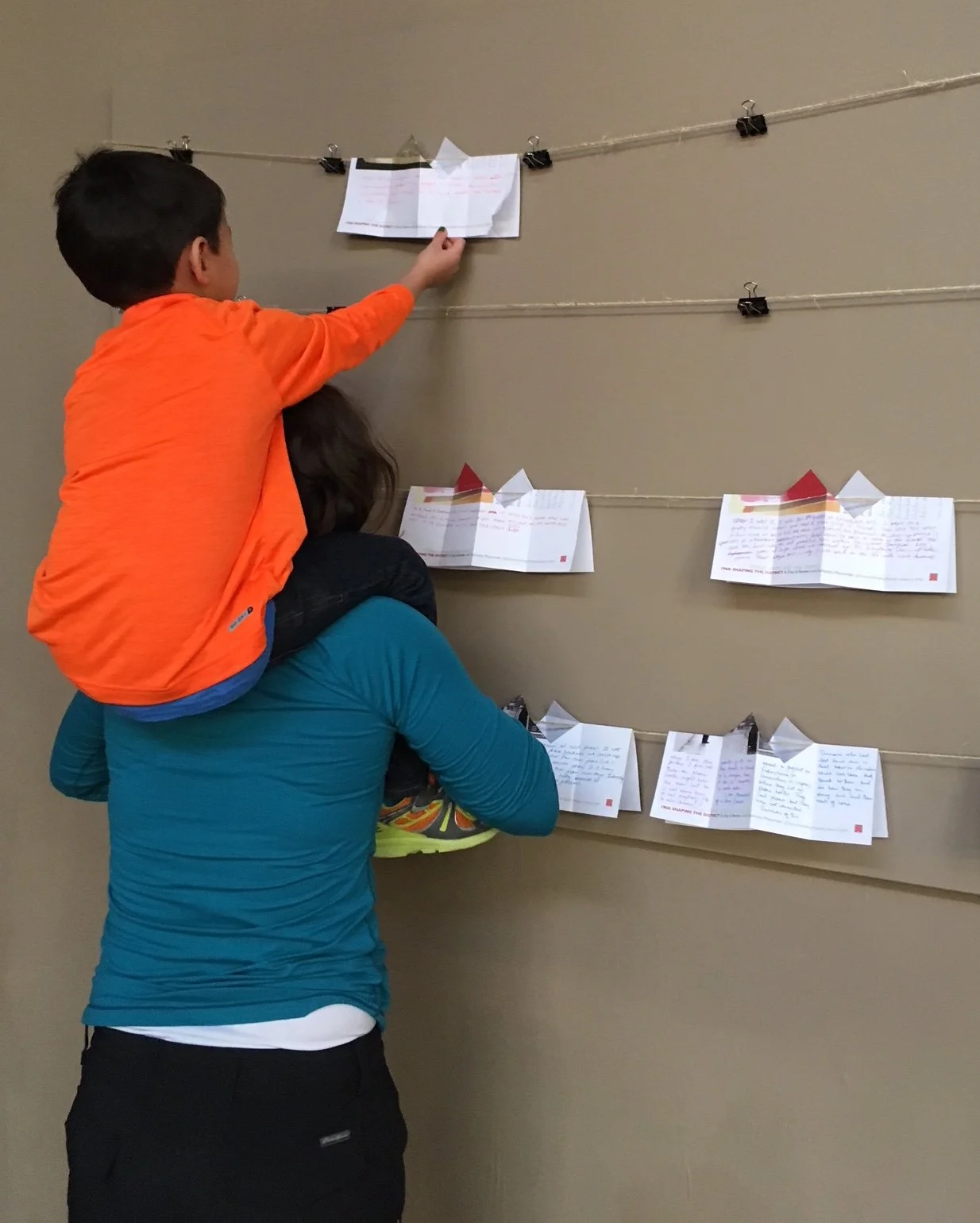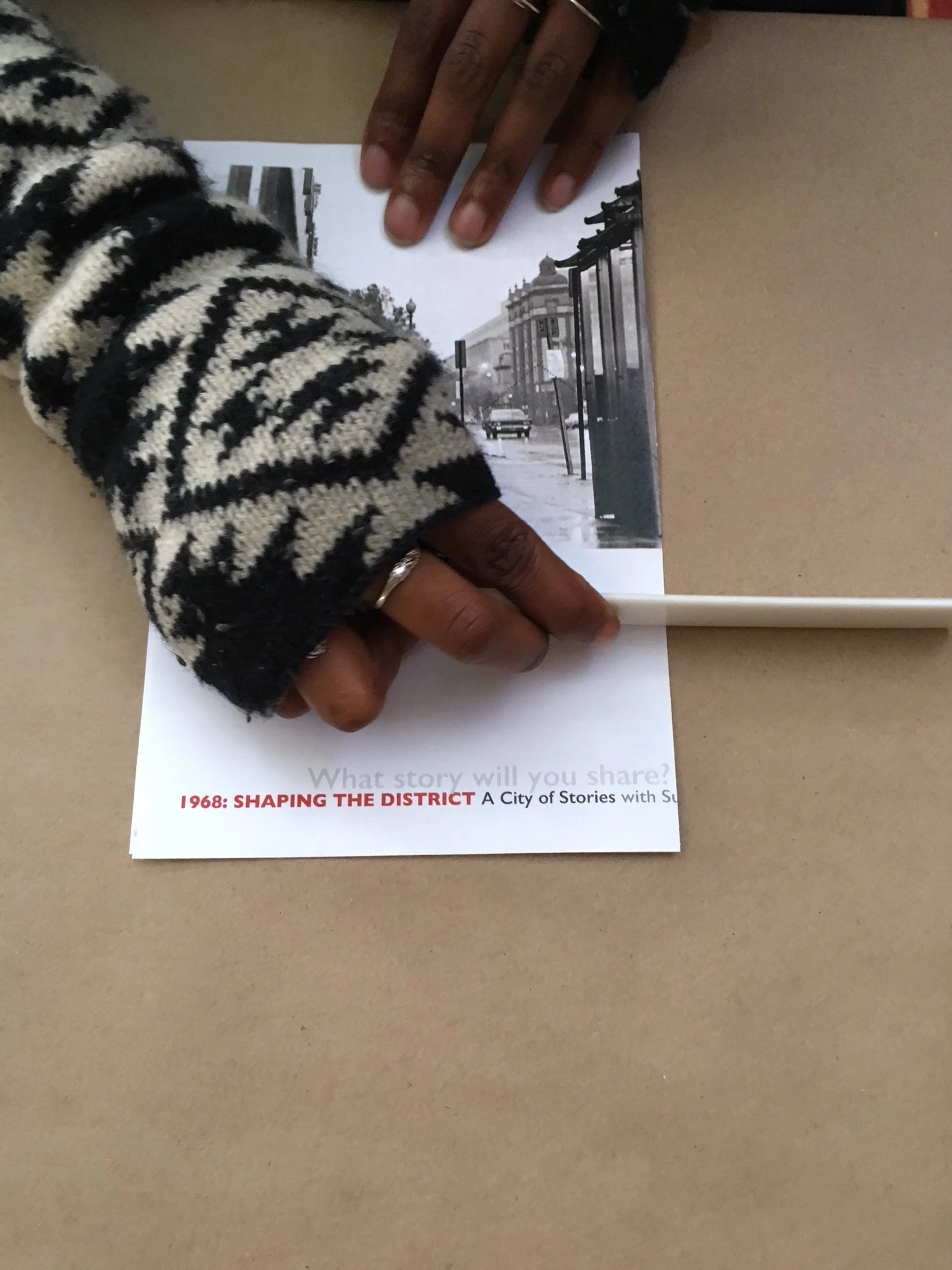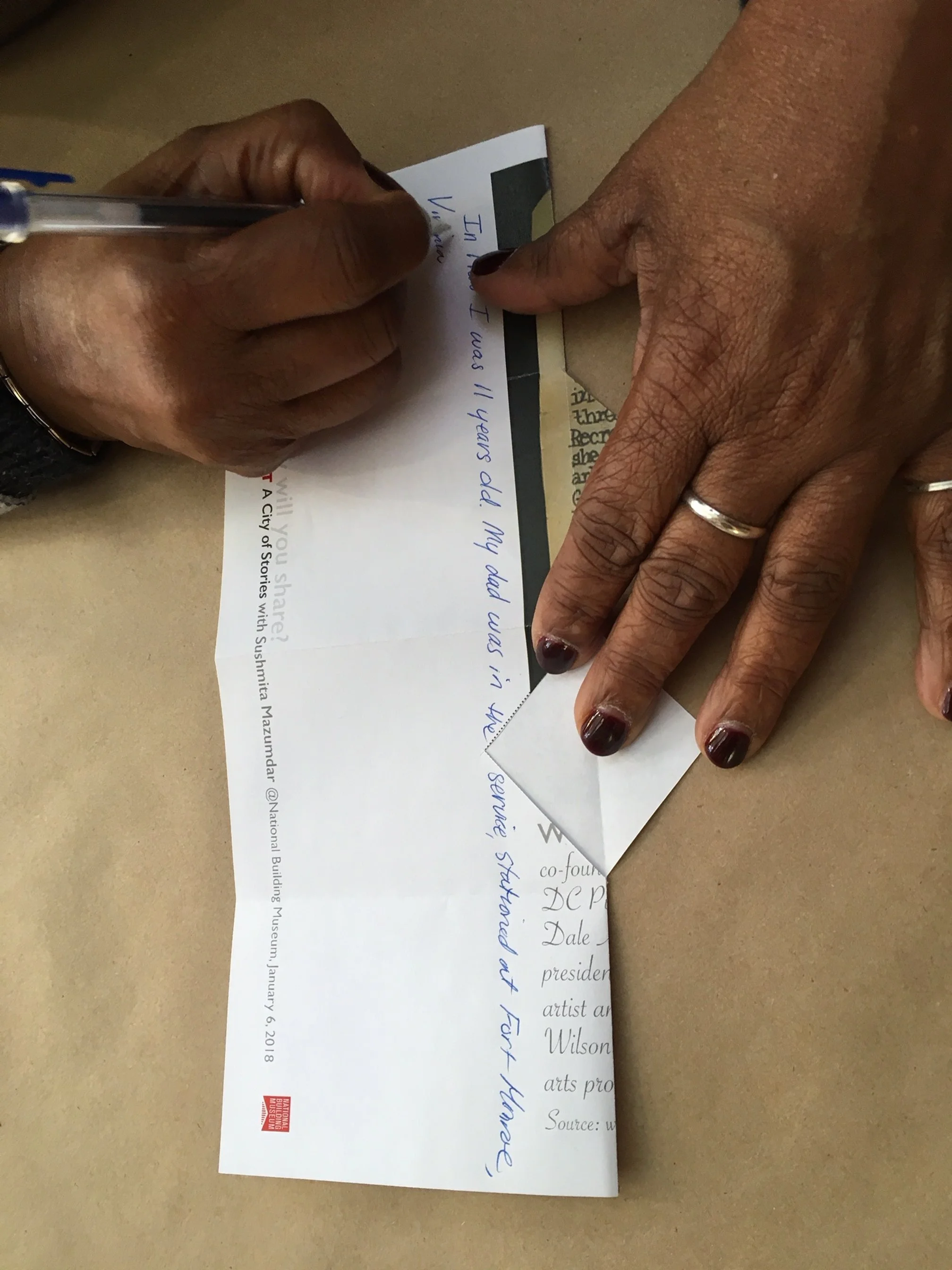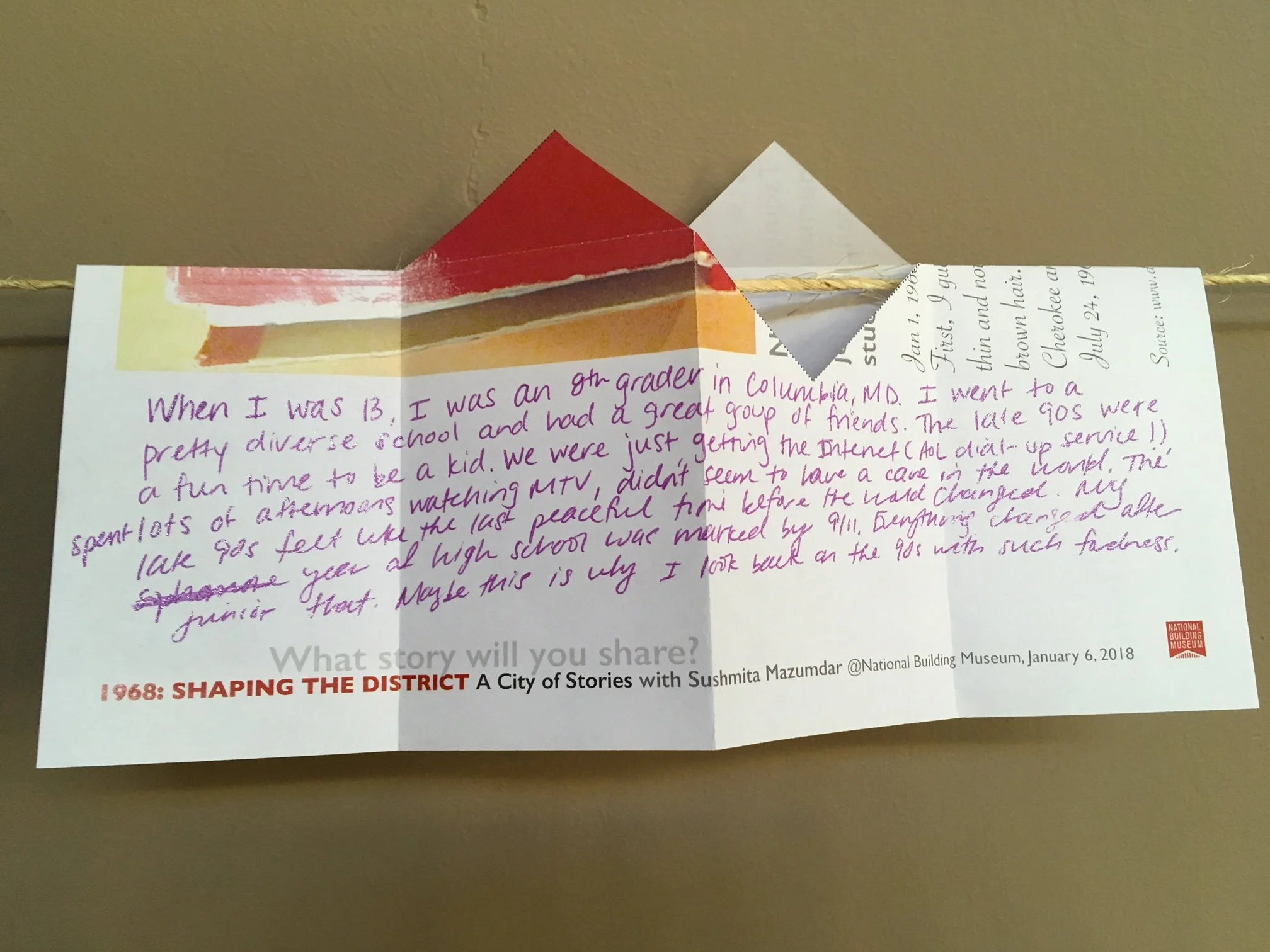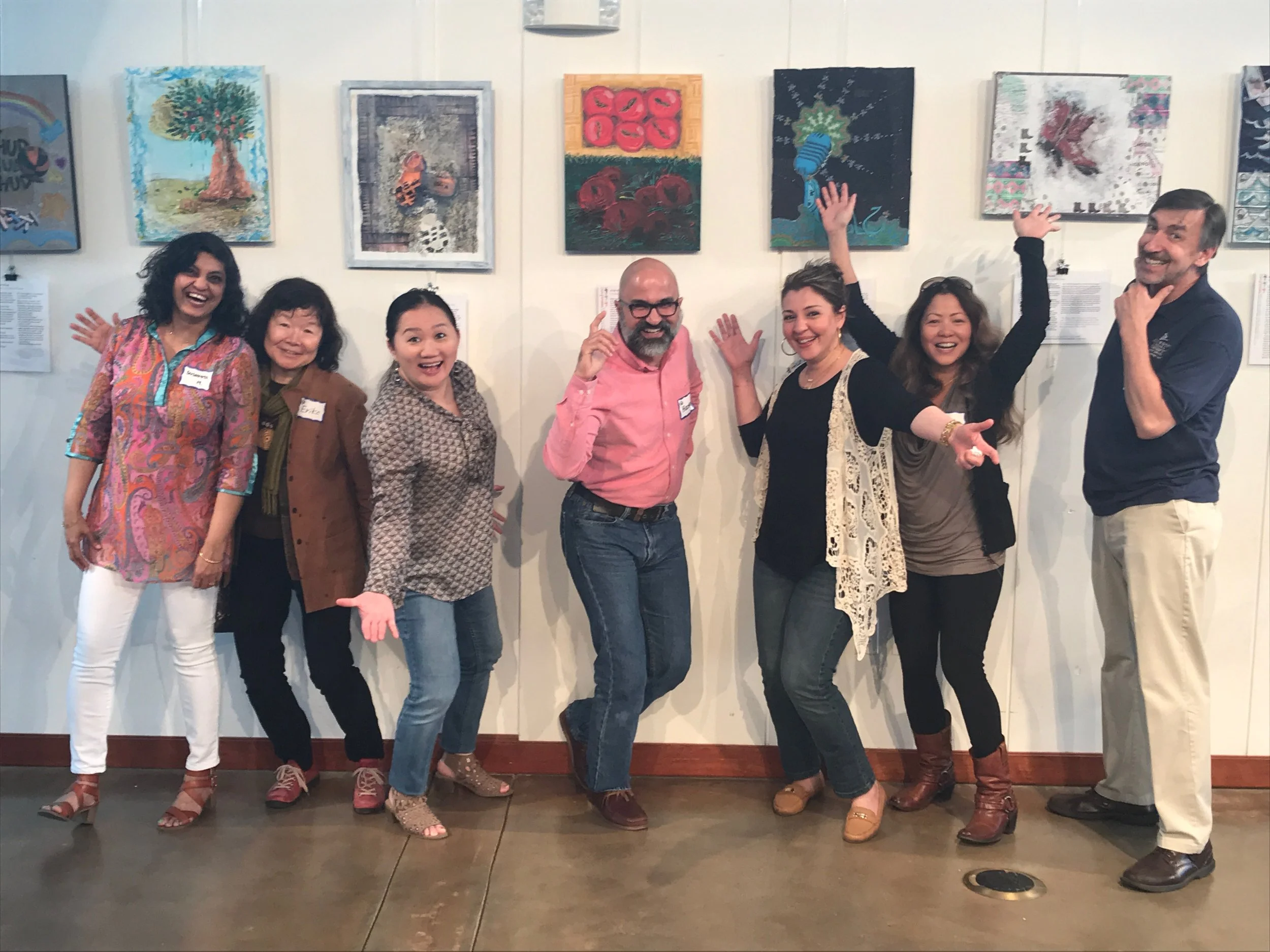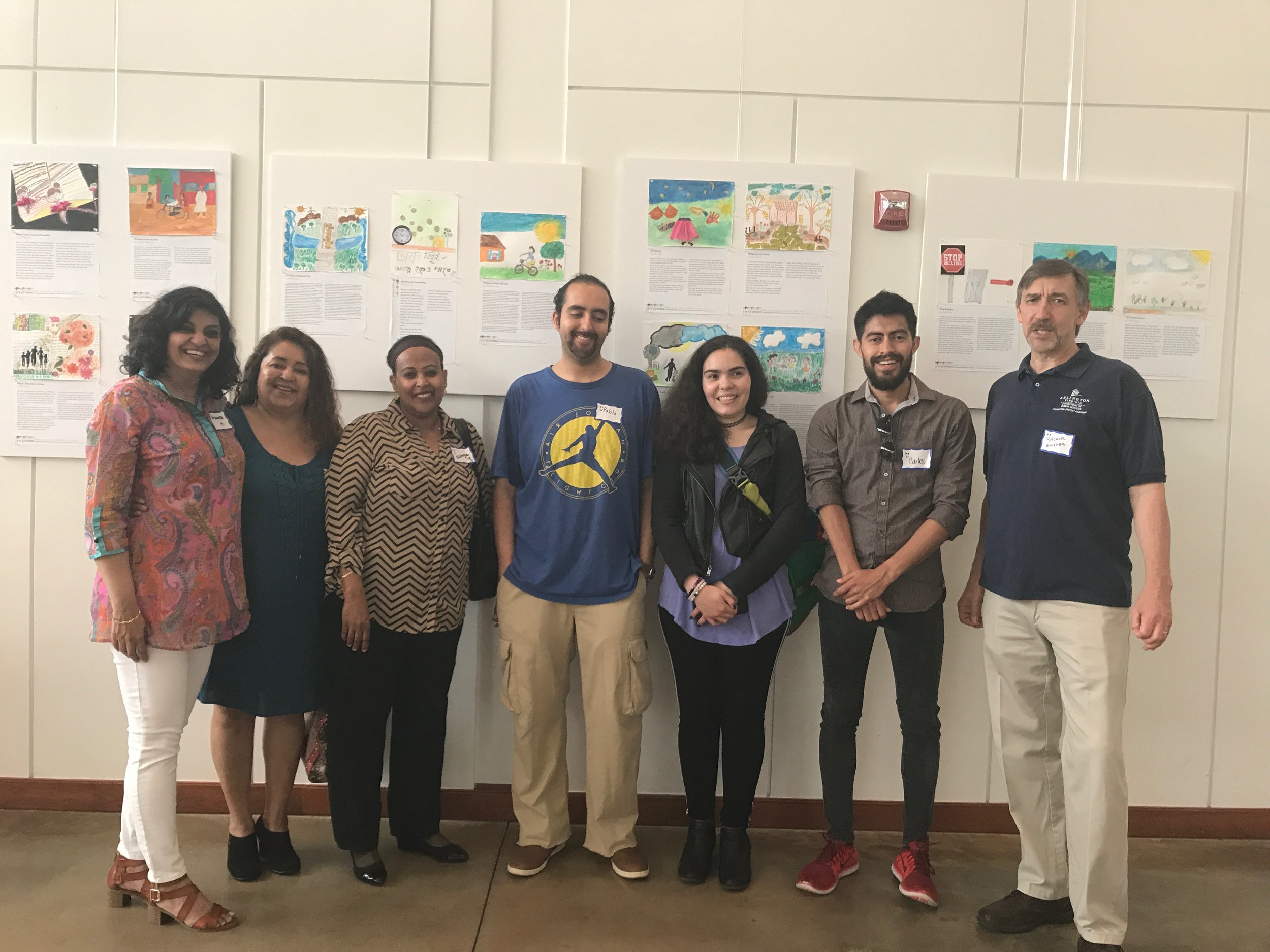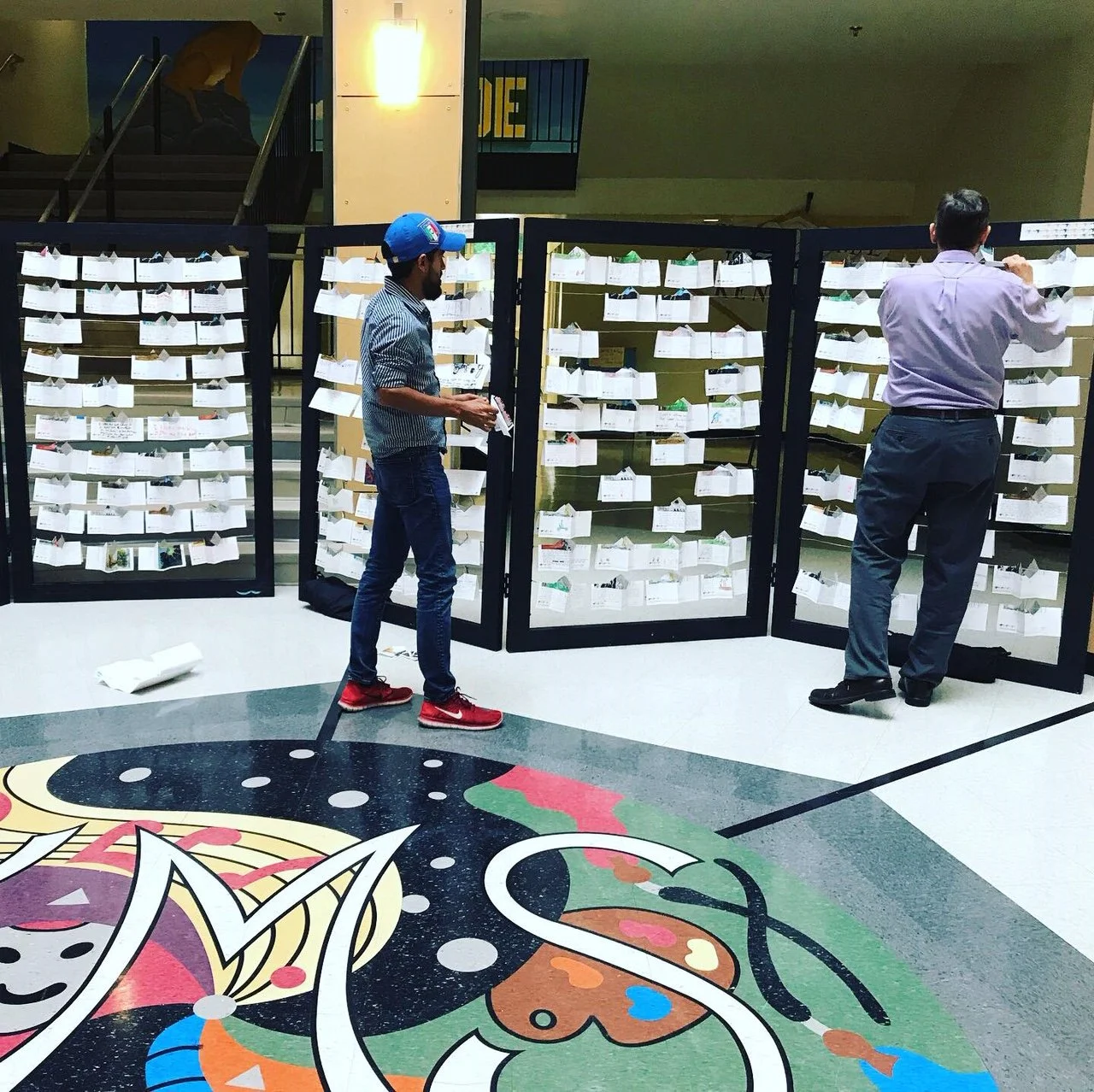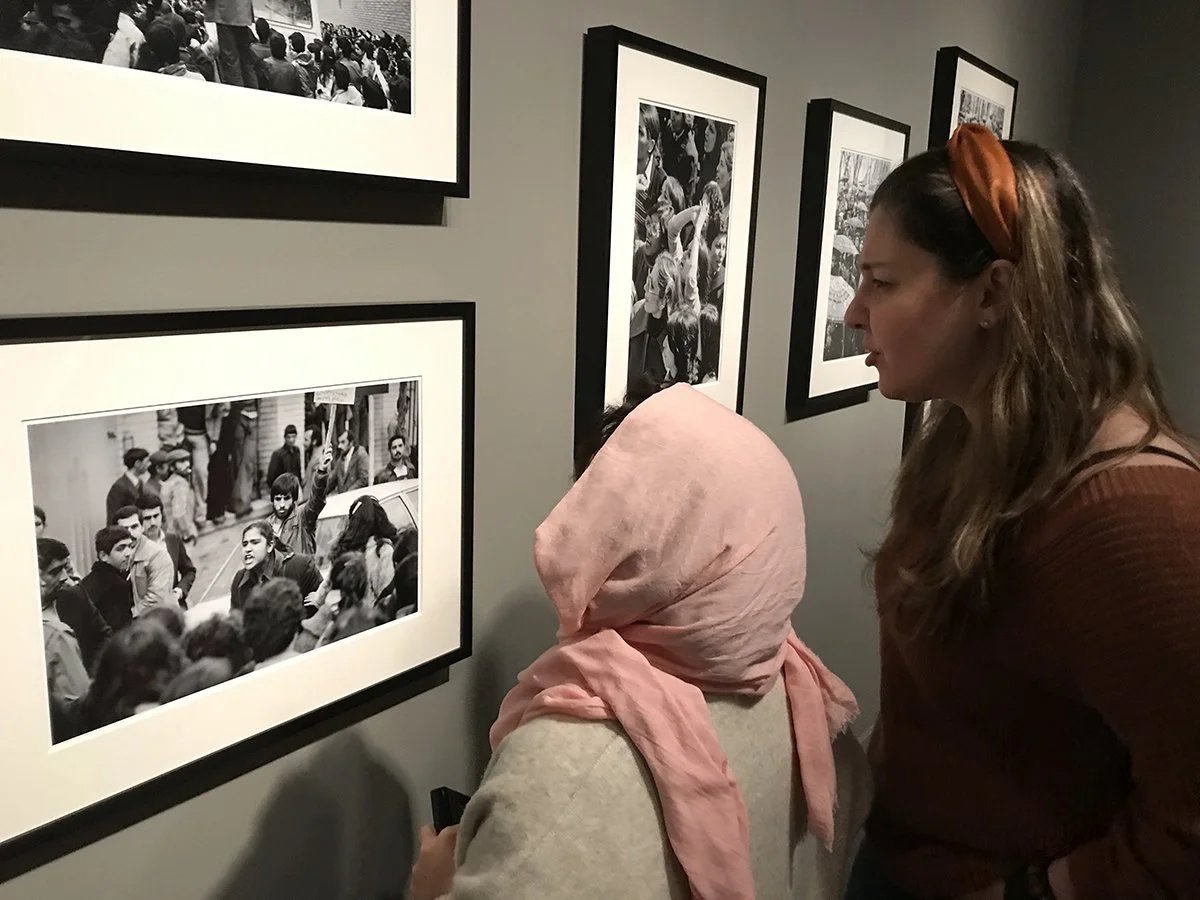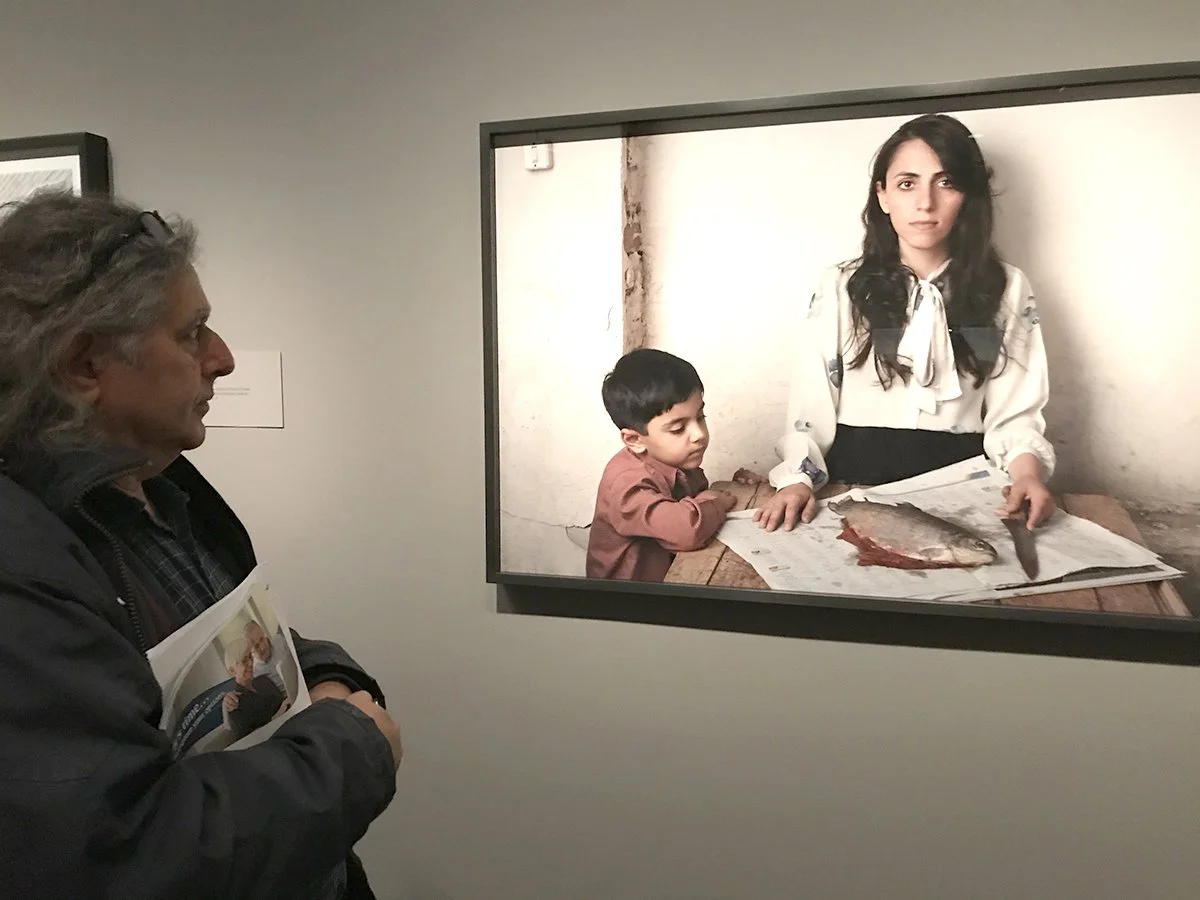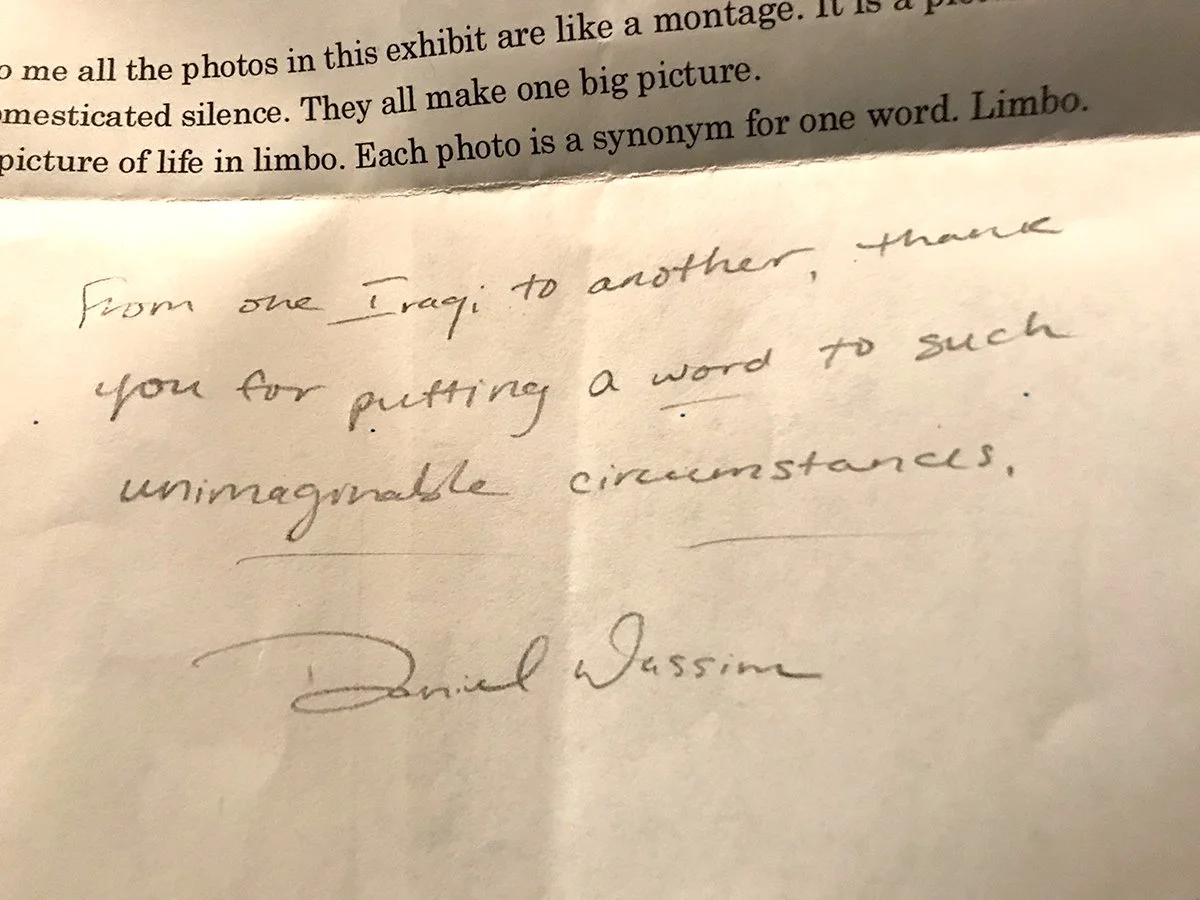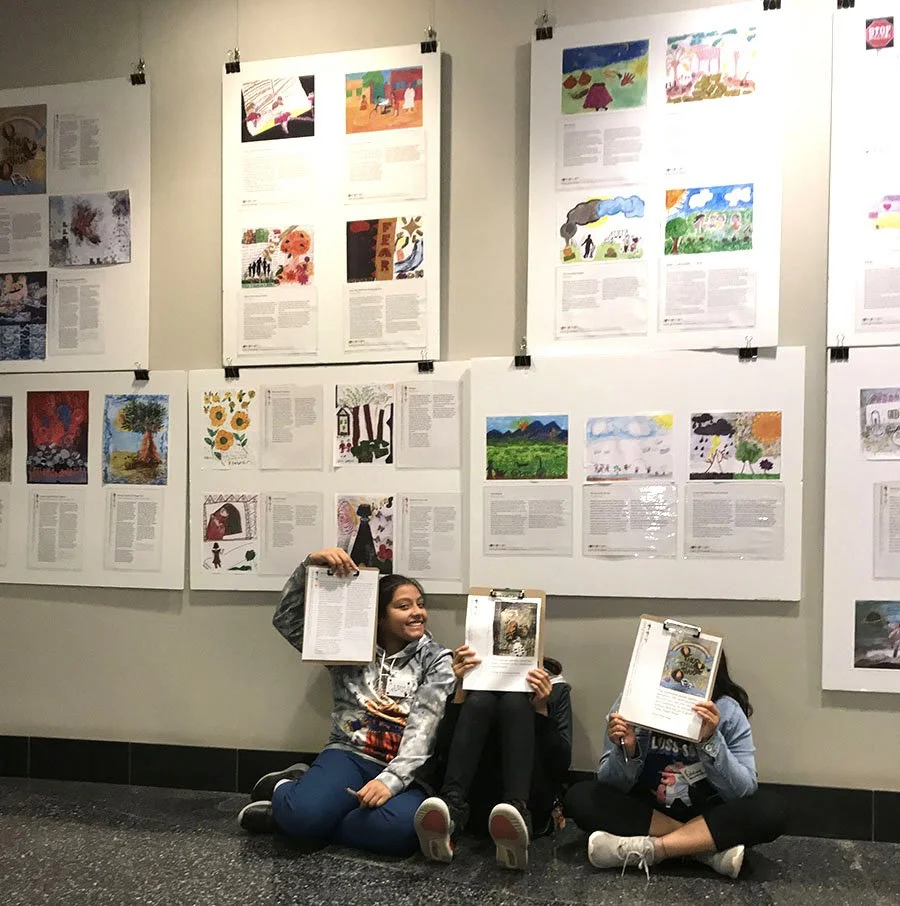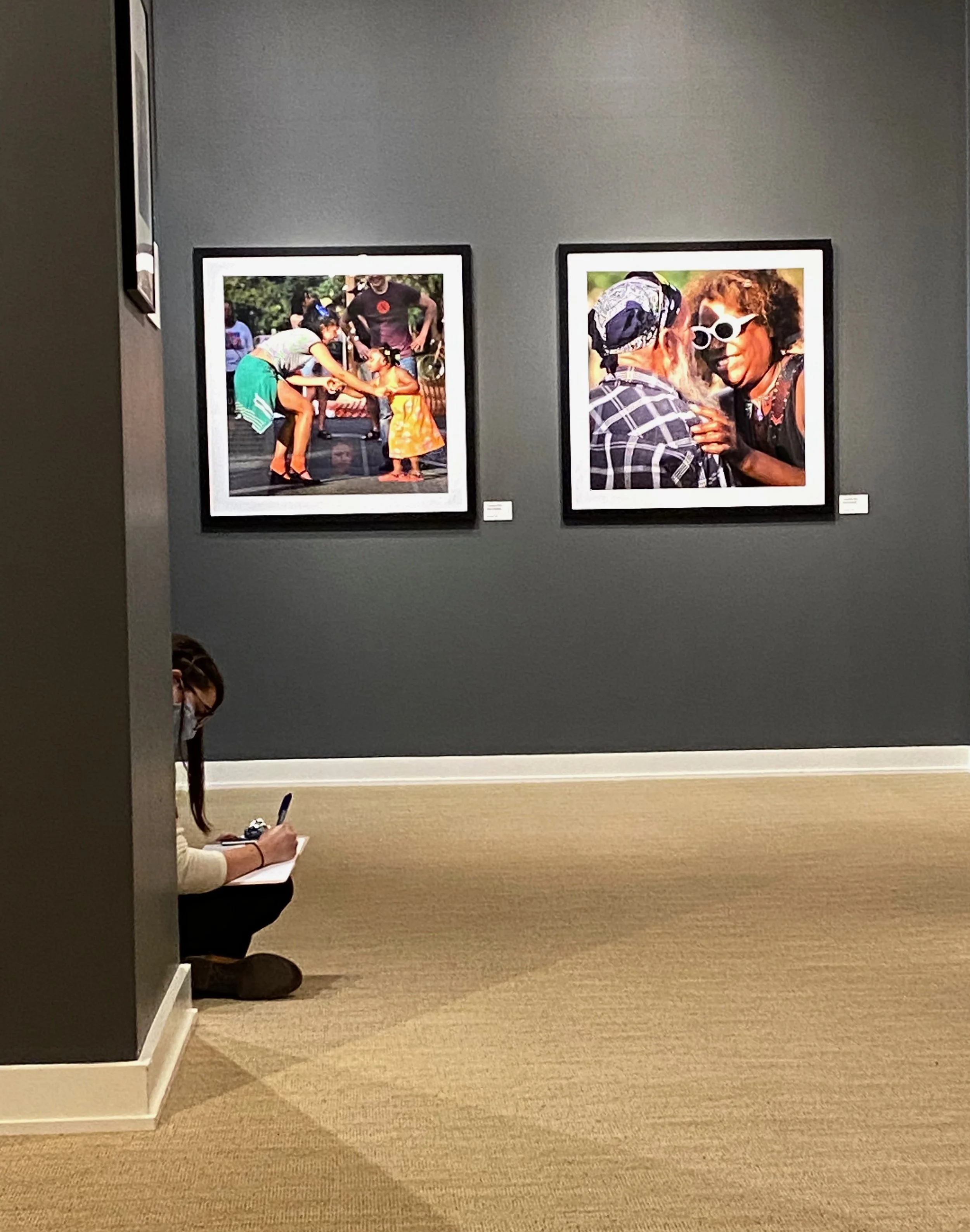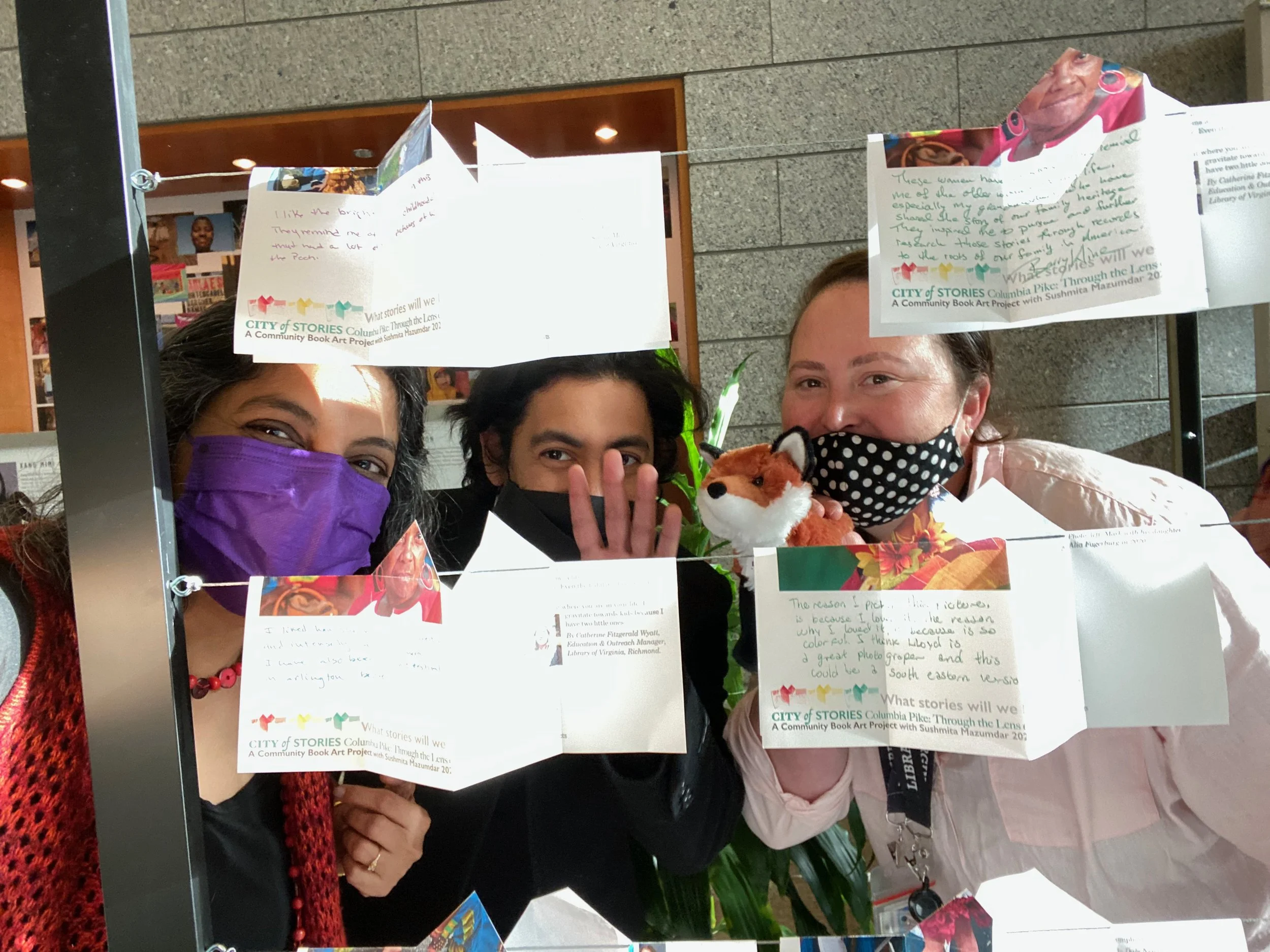City of Stories
Learning ways to tell our stories, so we can encourage others to share theirs, and they can teach others to share theirs...
“Where do stories reside? In memories, in art and literature, in histories and archives, in life as it unfolds daily. But who cares to hear these stories? Who has the time? How can our physical bodies feel the presence of these stories all around us? What can inspire us to share our own? How can we bring the stories out—free them—so we can all see them? How can art help free the stories? And once the stories are out and we read/listen to them or see them, how do we change? What do we learn about our community? What do we learn about the world we live in?”
City of Stories is a book arts project Sushmita started working on in 2018 that makes community voices visible. Many people who come to Studio Pause hear stories from others, stories that they might not otherwise hear—stories of school life, immigration, education rights, language equality, family, incarcerated parents, and more. Through this project, she invites them to tell her or write down these stories and then she makes them into art. The stories are then shared through her signature StoryPages which can be folded into house-shaped books. They are displayed as rows of houses and many people can see the stories and respond with their own stories! When we teach one to share their story, others will connect and be inspired to share their own. In a world where we know everything celebrities do and learn about the lives of great people, where is the chance to see how the stories of everyday people in our community can inspire us? City of Stories shows us how learning the stories of everyday people can teach us to be a more understanding community.
What Stories Will We Build Our City With?
1968: Shaping the District
On January 6, 2018, my first City of Stories came to life at the National Building Museum, Washington D.C. as part of the project 1968: Shaping the District. This collaborative event launched a year of programming and exhibitions throughout Washington D.C. marking the 50th anniversary of this historic year.
At the planning meeting, as I listened to the various collaborating organizations sharing what they will do at the event, I was amazed at all the history I did not know. As an immigrant who did not go to school in the US, I knew there was a lot I did not know about my new home. When it was my turn to speak, I told the collaborators that I wanted one story from each of them so I can share them with visitors through my project. Washington DC is full of people from all over—who work here or come as tourists. Do they know the stories of DC?
I would invite others to respond to a story or image that speaks to them. I would show them how the StoryPage becomes a house-shaped book and with blank space where they can share their story for everyone to read. When they shared their stories I knew I would learn a lot more about the history and the people of Washington DC and the people who live/visit here.
With my years of experience as a museum docent, I knew that objects tell great stories, be it a photo or an artwork. I used these to catch people’s attention and used a snippet of the story with each image.
City of Stories, Arlington, VA
The same year, I decided to extend this project to Arlington, VA, where my children went to school. All us parents were proud of our city’s diversity. But where did Arlington Public School students learn about diversity? Whose stories did they know? How about the extended day staff who cares for them before and after school? Did the children know their stories?
I collaborated with Michael Swisher, Chair of the Out of School Time Council’s Professional Development Committee (OSTPD) which develops, delivers, and coordinates training opportunities for staff who work with young people during after-school, evening, and weekend hours. The focus of professional development is on ensuring staff are able to provide a safe and supportive environment in their programs, engage positively with young people, and offer quality program activities to youth participants that allows them to express themselves.
“The City Of Stories project is important to the OST community because it provides a unique and creative way for young people to share their stories. Even better, it raises the profile and value of many of the staff who come from different cultural backgrounds and for whom English is a second (or third!) language. By deliberately engaging these staff the project allows them an opportunity to share their personal stories and cultures with children and families of Arlington Public Schools, as well as their peers.” ~ Michael.
I had taught 3 workshops for OST at their conference in Nov 2017 and noticed how they enjoyed my “I Shine” bookmaking workshop. This led to the idea of the collaboration for the Arlington Arts individual artist’s grant project.
Stories of the PAUSErs, stories of OST staff, stories of children
I decided to invite 10 members of the Studio community (people I call PAUSErs) to share a story from their childhood which they wanted to share with the children of Arlington Public Schools. Then I created art inspired by the stories. I then designed the story and art into StoryPages and trained 21 Arlington’s Out of School Time staff to share their own stories, through words and art. They would then share them to encourage elementary school students they care for to share their own.
The City of Stories Installation
These pages then become 3D house-shaped books which will be installed on large folding frames like a city so everybody can read the stories our city is made of.
Photos: Top - The OST staff, seeing the books made by their students on display, UUCA exhibit, 2018 • PAUSErs with the art Sushmita made inspired by their stories, UUCA exhibit, 2018 • OST staff with their stories and art on display at the UUCA exhibit, 2018 • The City of Stories installation, Kenmore Middle School, Arlington VA 2018.
City of Stories: My Iran
I am very curious about how art works as prompts for our stories. How do we react to visuals? How does how others react to them affect us? As viewers what do we do with a visual we don't like, one which makes us uncomfortable? And what do we do with one we identify with? I got to explore all this when I got the opportunity to create a City of Stories in conjunction with the exhibit My Iran: Six Women Photographers, at the National Museum of Asian Art, Washington D.C., in 2020.
I was asked to design an activity for the My Iran exhibit where I would engage adults. I saw the exhibit and was very moved by the photos. As I went through the multiple trainings for the docents I saw the curator in a different light. Massumeh was an Iranian woman herself. Some of her comments and explanations were very close to her heart. I listened to a lecture by one of the photographers who visited. I noticed the reactions of male, American docents to the photos and heard their comments and found myself feeling strong emotions. I also watched a mother and daughter in the galleries and saw them be like I have never been with my daughter. In many of the photos, I saw the stories of people I knew, people who come to Studio Pause.
I thought of City of Stories, naturally.
I invited PAUSErs—who might or might not have ever visited the museum, or even seen Iranian photos before—to visit and respond to the photos through writing. I made their writing into StoryPages along with the photo they responded to.
One weekend, we invited visitors to respond to the photo from the exhibit or the story of the PAUSEr. We taught them how the StoryPage became a house-shaped book and let them write. Then add it to the display. Visitors wrote in various scripts/languages. There were many multi-generational groups who participated. We did not ask them to translate as many were clearly emotional about their writing.
Photos, right: The PAUSErs who participated in the project visit the museum and interact with visitors and pose with the installation • PAUSErs Sughra Hussainy, Rana Jaafar Yaseen, Lloyd Wolf, and Elizabeth Isaac visit the museum to see the exhibit • Inter-generational book-making and story-sharing on the evnt weekend • Visitors respond to the StoryPages in various ways • Hamed Farmand, one of the PAUSErs who participated, is from Iran and his mother had participated in the protests shown in the exhibit. When he was a child she was arrested and jailed. Watch his response in the video.
City of Stories: Voices of Children
In Nov 2019 I started the City of Stories: Voices of Children project with Bu-Gata’s Buckingham Youth Brigade. The City of Stories grant project was on view at Arlington’s Bozman Center so I took the students to see it.
From my grant report: The participants of the Buckingham Youth Brigade have visited Studio Pause often for after-school sessions and summer camps. Starting in Nov 2019 they participated in a new version of my City of Stories project. I have often thought about what stories children will tell if or when they see stories written by adults in their community with who they have some connection. So I showed them the stories and art done by Arlington Public School after-care staff, all of who were immigrants caring for children, immigrants like many of the BYB kids or their parents. They even recognized a staff member who had shared their story from their school!
We had all the stories and the students had all made their artworks with one student just completing his pencil drawing—he had researched what llamas look like as his story was from a trip “back home”—when the COVID-19 pandemic hit and we were in lockdown. The bustling Rinker Community Center building is quiet and the cheerful, noisy playground is silent. I remember noticing the day the ice cream truck rolled into the parking lot. As I worked here alone and quiet day after day, figuring out new projects, perhaps a new website as the Studio has been shut to the public, something, anything, I couldn’t get myself to finish the project. We had done our sharing of the children’s stories with the school in Incheon, S. Korea but the pandemic had caused a lockdown there first. As I read the stories that students sent in from Korea, I read stories of pandemic, the death of a grandma, stories of the worry of school re-opening, and crashing computers.
It is hard to explain how much energy I found in this building, in this community, in the laughter of the children. My mind just cannot function, my hands weigh a hundred tones, and the simplest easiest thing like putting images of art done by listless children in Korea into a pre-existing design seems like an impossible task.
The report explains everything we wanted to do and could not do.”
City of Stories goes to Richmond!
December 2021, the City of Stories went to Richmond, VA where there was a glorious exhibit of the Columbia Pike Documentary Project, which is archived at the Library of Virginia. But how would the people of Richmond relate to our Columbia Pike, “the world in a zip code”? I decided to invite the library staff to help. I decided to engage them to help engage the larger Richmond community.
As the Columbia Pike Documentary Project is acquired by the Library of Virginia and is archived there, a new exhibit, Columbia Pike: Through the Lens of Community, (August 31, 2021–January 8, 2022) opened sharing the stories of The Pike through photos and interviews. Inspired by the project, the exhibition team wished to encourage community engagement and designed large vinyls of the photos and displayed them in the library windows overlooking the street and welcoming visitors in, and on benches inside the library, filling the cold stone interiors with color. They also wished to engage the community to share stories. So I suggested a new City of Stories project.
The library had just re-opened after the pandemic and people were starting to work here in-person again.
“What visuals do you connect with? What resonates with you?” I asked the staff/team as we walked through the exhibit together. They will get a chance to jot down notes. Then they each sat with me and told me the story as I wrote it down. Their story and the photo from the exhibit which inspired it became the StoryPages. Visitors could pick the one the spoke to them, fold it up into a house-shaped book, and share their own story, and add their house-shaped book on the City of Stories.



